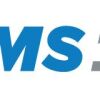St. Charles County, Mo., like thousands of other communities across the nation, is facing a serious health epidemic: opioid and heroin overdose. While St. Charles county boasts the highest median household income in the state, unemployment is well below the national average and several municipalities have been named Money magazine’s “Best Places to Live,” opioid abuse has steadily increased.
“If we go back just under a decade to 2008, our volume for these types of calls was under 200 per year. It grew steadily over the next six years, spiked 40 percent in 2015, and last year increased further to 425,” said paramedic Lisa Cassidy, the driving force behind St. Charles County Ambulance District’s (SCCAD) #StopHeroin initiative.
Cassidy and colleagues began talking in 2016 about how the district may be able to inform residents just how serious the issue had become. The initiative has since evolved into a robust, multi-pronged effort aimed not only at awareness, but intervention for those struggling with addiction. With Dave Lewis, SCCAD assistant chief, Cassidy developed a system of follow-up for substance, opioid and heroin overdose patients revived by the district.
For EMS providers, overdose calls can be extremely frustrating. Unappreciative patients, complicated bystander dynamics and a host of other less-than-ideal variables may present themselves on calls of this nature. Often, patients do not want to go to the hospital, leaving paramedics in the difficult position of obtaining a refusal from someone whom they know may use again.
Regardless of whether those successfully resuscitated agree to go to the emergency department, they are rarely linked with treatment resources in their community.
Creating Links to Treatment
The pair worked closely to secure agreements with in-patient and out-patient treatment partners Preferred Family Healthcare, Center Pointe Hospital, Crider Center and Bridgeway Counseling. Each of these agencies specialize in different areas of treatment and several have agreed to guarantee beds to SCCAD-referred patients, regardless of individuals’ ability to pay. St. Louis-based National Council on Alcoholism and Drug Abuse has also lent invaluable insight into the development of the follow-up from the Substance Use Recovery Response Team.
At the time of an overdose call, paramedics always recommend that the patient go to the emergency department for further observation and treatment. If the patient refuses, he or she will be offered an intramuscular dose of naloxone as a precautionary measure.
All opioid and heroin overdose patients, regardless of whether they agree to transport or the second dose of naloxone, will be provided a packet of treatment resources available to them. The packet includes a release form, authorizing the attending paramedic to share the patient’s information with Cassidy or the district’s other mobile integrated health paramedics.
If the individual agrees, a specially-trained MIH paramedic will arrange a follow-up appointment in 24 to 48 hours to discuss treatment options in more detail.
Also included on the release form are spaces for the patient to authorize SCCAD to speak with family members; the goal being that they would have a supportive individual present at the time of treatment discussion.
Reason for Optimism
Substance Use Recovery Response Team launched in early 2017. SCCAD, along with their mental health partners, are optimistic about the future of the program. Several patients have already entered treatment programs and one women used the information packet to enter a treatment program before paramedics were able to return for a follow-up appointment.
The team is hopeful that it will, in time, reduce instances of opioid and heroin overdose in the county.
“Will every patient agree to seek treatment? Of course not,” Cassidy stated candidly.
But continuing to obtain refusals will do nothing, but keep us on the path we’ve been on. This is an epidemic on which we need to work collaboratively if we want to see meaningful change.”
About the Author
Kyle Gaines serves as director of community relations for SCCAD, and has served with the district since 2008. In his role, Gaines plans, develops and executes of the district’s community safety programs. In addition, he leads marketing efforts for SCCAD, including newsletters, social media and presentations for community groups on a wide variety of topics.













